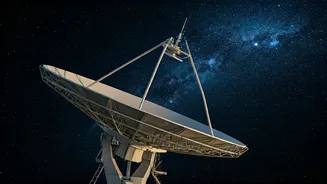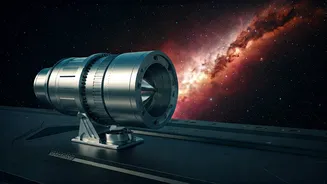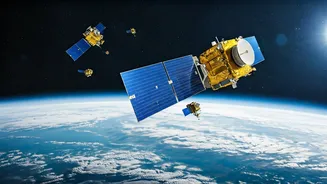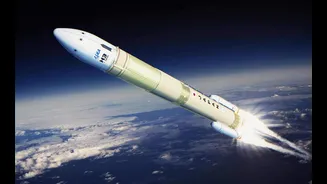Data's Increasing Dominance
The satellite industry is experiencing a profound shift, with data transmission emerging as a dominant force. This trend is reshaping revenue streams,
indicating a future where data services will likely surpass traditional video delivery. The ever-growing demand for connectivity, driven by both commercial and governmental needs, is fueling this transformation. The need for real-time data access, advanced analytics, and enhanced communication capabilities are all propelling the importance of data-centric services within the satellite sector. This shift also reflects broader societal changes, as industries become increasingly reliant on data for informed decision-making and operational efficiency. The evolving use of high-throughput satellites (HTS) to support the growing data needs further illustrates this transition towards a data-driven satellite economy, underscoring the critical role of data in shaping the future of space-based services.
Video's Declining Influence
While video services have historically been a significant revenue source for satellite operators, this is expected to decline in the coming years. Changes in consumer behavior, such as a preference for streaming and on-demand content, contribute to this downward trend. Increased competition from terrestrial and other satellite services is also impacting video distribution revenues. Moreover, the shift from traditional broadcast models to more efficient delivery methods is playing a significant role. These trends suggest that satellite operators will need to diversify their offerings to accommodate changing market dynamics. By expanding into data services, embracing new technologies, and exploring strategic partnerships, the satellite industry aims to maintain its financial health. The declining revenues from video services underline the need for industry players to adapt and innovate to stay relevant in the evolving digital landscape.
Thruster Innovation Unveiled
ECAPS has made a breakthrough in fast-start thruster (FAST) technology. This development offers considerable benefits in satellite maneuverability and efficiency. Fast-start thrusters are critical for adjusting satellite orbits, maintaining their position, and facilitating quicker responsiveness in emergencies. The advancement by ECAPS signals a shift towards more advanced and effective propulsion systems within the satellite industry. This technology could reduce fuel consumption, extend mission life, and potentially enhance the overall capabilities of satellites. The innovation has the potential to enhance satellite operations and provides new opportunities for optimizing space-based activities. As technology evolves, it opens up new avenues for optimizing satellite propulsion systems and enabling improved space exploration, communications, and defense applications. These innovations will also create new avenues for enhanced satellite control and operation.
Defense Satcom's Ascent
The global defense satcom commercial service revenues are poised to experience a substantial surge, with projections estimating growth past $8.6 billion by 2034. This significant increase underscores the critical importance of satellite-based communication for defense and security purposes. Increasing geopolitical tensions and the growing need for secure, reliable communication are major factors driving this expansion. The demand for advanced satellite capabilities, including high-bandwidth data transmission, secure voice communication, and intelligence gathering, contributes to this financial uptrend. Governments worldwide are investing heavily in space-based assets to enhance their defense capabilities, fueling further growth in this sector. The expanding defense satcom market reflects the industry's role in supporting critical missions and national security initiatives. This upward trend highlights the vital importance of satellite technology in modern defense strategies and international relations.











